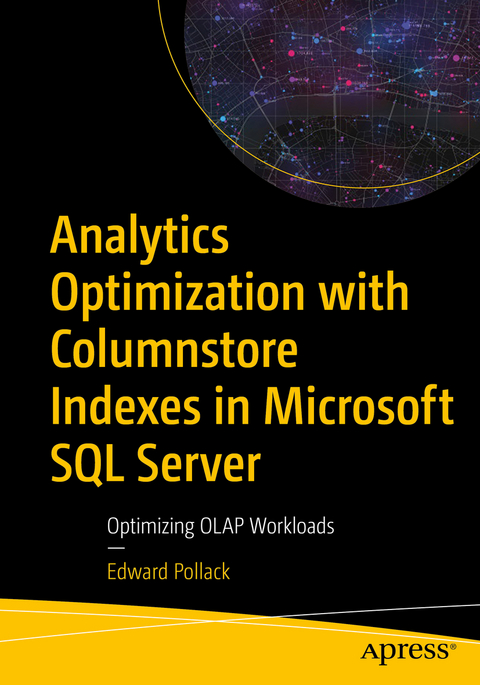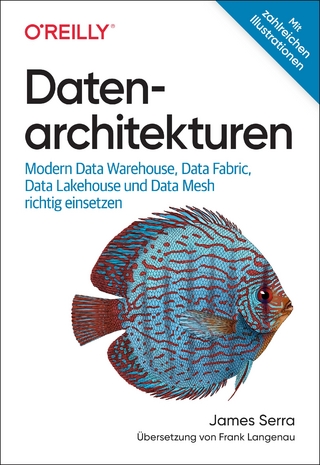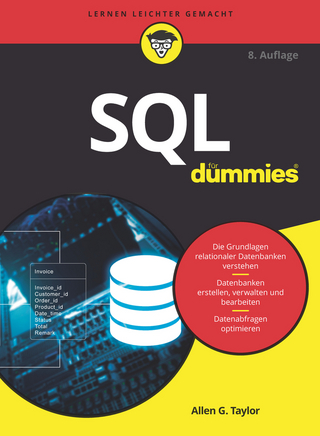
Analytics Optimization with Columnstore Indexes in Microsoft SQL Server
Apress (Verlag)
978-1-4842-8047-8 (ISBN)
With little or no knowledge of columnstore indexing you can become proficient with columnstore indexes as used in SQL Server, and apply that knowledge in development, test, and production environments. This book serves as a comprehensive guide to the use of columnstore indexes and provides definitive guidelines. You will learn when columnstore indexes shouldbe used, and the performance gains that you can expect. You will also become familiar with best practices around architecture, implementation, and maintenance. Finally, you will know the limitations and common pitfalls to be aware of and avoid.
As analytic data can become quite large, the expense to manage it or migrate it can be high. This book shows that columnstore indexing represents an effective storage solution that saves time, money, and improves performance for any applications that use it. You will see that columnstore indexes are an effective performance solution that is included in all versions of SQL Server, with no additional costs or licensing required.
What You Will Learn
Implement columnstore indexes in SQL Server
Know best practices for the use and maintenance of analytic data in SQL Server
Use metadata to fully understand the size and shape of data stored in columnstore indexes
Employ optimal ways to load, maintain, and delete data from large analytic tables
Know how columnstore compression saves storage, memory, and time
Understand when a columnstore index should be used instead of a rowstore index
Be familiar with advanced features and analytics
Who This Book Is For
Database developers, administrators, and architects who are responsible for analytic data, especially for those working with very large data sets who are looking for new ways to achieve high performance in their queries, and those with immediate or future challenges to analytic data and query performance who want a methodical and effective solution
Edward Pollack has over 20 years of experience in database and systems administration, architecture, and development, becoming an advocate for designing efficient data structures that can withstand the test of time. He has spoken at many events, such as SQL Saturdays, PASS Community Summit, Dativerse, and at many user groups and is the organizer of SQL Saturday Albany. Edward has authored many articles, as well as the book Dynamic SQL: Applications, Performance, and Security, and a chapter in Expert T-SQL Window Functions in SQL Server. In his free time, Ed enjoys video games, sci-fi & fantasy, traveling and baking. He lives in the sometimes-frozen icescape of Albany, NY with his wife Theresa and sons Nolan and Oliver, and a mountain of (his) video game plushies that help break the fall when tripping on (their) kids’ toys.
1. Introduction to Analytic Data in a Transactional Database.- 2. Transactional vs. Analytic Workloads.- 3. What are Columnstore Indexes?.- 4. Columnstore Index Architecture.- 5. Columnstore Compression.- 6. Columnstore Metadata.- 7. Batch Execution.- 8. Bulk Loading Data.- 9. Delete and Update Operations.- 10. Segment and Rowgroup Elimination.- 11. Partitioning.- 12. Non-Clustered Columnstore Indexes on Rowstore Tables.- 13. Non-Clustered Rowstore Indexes on Columnstore Tables.- 14. Columnstore Index Maintenance.- 15. Columnstore Index Performance.
| Erscheinungsdatum | 06.03.2022 |
|---|---|
| Zusatzinfo | 149 Illustrations, black and white; XIX, 280 p. 149 illus. |
| Verlagsort | Berkley |
| Sprache | englisch |
| Maße | 178 x 254 mm |
| Themenwelt | Mathematik / Informatik ► Informatik ► Datenbanken |
| Mathematik / Informatik ► Informatik ► Software Entwicklung | |
| Schlagworte | Analytics • Azure SQL • Bulk Loading Data • Business Intelligence • Columnstore Index • data architecture • Data Compression • indexing • OLAP • Partitioning • performance optimization • SQL Server |
| ISBN-10 | 1-4842-8047-4 / 1484280474 |
| ISBN-13 | 978-1-4842-8047-8 / 9781484280478 |
| Zustand | Neuware |
| Informationen gemäß Produktsicherheitsverordnung (GPSR) | |
| Haben Sie eine Frage zum Produkt? |
aus dem Bereich


